Hertfordshire
FIRST GARDEN CITY ∗ FIRST NEW TOWN ∗ HOUSE OF FUN ∗ PAPER TRAIL ∗ ROYAL SPIN
Brocket Hall, Prime Ministerial retreat where the waltz was introduced into England.
HERTFORDSHIRE FOLK
Nicolas Breakspear ∗ John Eliot ∗ Sir Henry Bessemer ∗ William Cowper ∗ Graham Greene ∗ Sir Michael Hordern ∗ Esther Rantzen
Berkhamsted
It was at BERKHAMSTED CASTLE, in December 1066, that William the Conqueror took the final surrender of the Saxons and was declared King of England. Only fragments of the castle remain, but there are impressive earthworks running along behind the main street
Letchworth
LETCHWORTH was founded in 1903 as THE WORLD’S FIRST GARDEN CITY, and is based on the vision of social reformer EBENEZER HOWARD, who wanted to relieve the crowded slums of London. The aim, supported by prominent Quakers and the Arts and Crafts movement, was to provide clean industries, low-rent housing and good services, in a healthy country environment. The town was divided up into zones, with the industrial areas kept well separated from the residential zones, and the town was ringed by an area of agricultural land, an early example of what would become known as ‘green belt’. Welwyn Garden City followed shortly afterwards, and the Australian capital Canberra was designed on the same principles in 1913.
Stevenage
STEVENAGE was ENGLAND’S FIRST NEW TOWN, designated as such in 1946, and the pedestrianised town centre, which opened in 1959, was ENGLAND’S FIRST PURPOSE-BUILT, TRAFFIC-FREE SHOPPING ZONE.
Well laid out and spacious, New Stevenage completely subsumes the village of OLD STEVENAGE from which it evolved. Old Stevenage, which dates from Norman days, grew up beside the Great North Road at its highest point between London and York. The village somehow retains much of the flavour of its 17th- and 18th-century heritage, with pleasant inns and narrow streets. The author E.M. FORSTER lived in Old Stevenage, next door to St Nicholas’s Church, in a house called ROOKSNEST, which he used as the model for the house in his novel Howard’s End, which was made into a film in 1992.
Racing driver LEWIS HAMILTON, who in 2007 missed out, by one point, on becoming the first rookie driver ever to win the Formula One World Championship, was born in Stevenage in 1985.
Brocket Hall
BROCKET HALL, near Hatfield, was built in 1760 by JAMES PAINE and stands in luscious grounds laid out by Capability Brown. There had been a house here since 1239, and the present Hall was built for SIR MATTHEW LAMB, whose son became the first LORD MELBOURNE.
There is something about Brocket Hall that seems to encourage bad behaviour, and the goings-on there have raised eyebrows and blood pressure since the Prince Regent used to visit his mistress, the first Lord Melbourne’s wife, there in the 1780s. Lord Melbourne didn’t seem to mind – he got his rather apt position as Gentleman of the Bedchamber out of it, and a title. The Prince Regent’s suite of rooms are still as he left them.
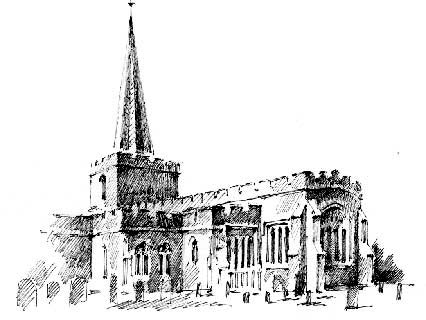
WILLIAM LAMB, the second Lord Melbourne, went on to become Queen Victoria’s first Prime Minister. His wife was the spirited LADY CAROLINE LAMB, granddaughter of the first Earl Spencer. Lamb married her when she was only 17, and the first years of their marriage were full and happy. Caroline was beautiful, petite, a talented writer and a party girl. She introduced the waltz into England at Brocket Hall, and gained a certain notoriety when she emerged naked from a soup tureen and danced on the ballroom table, during her husband’s birthday party. The same table is still used for banquets in the ballroom today.
As William’s political career progressed, however, they spent more and more time apart. While he concentrated on Parliament, a frustrated Caroline embarked upon a brief and disastrous affair with the poet Lord Byron. Byron was 24 and, in Caroline’s own words, ‘mad, bad and dangerous to know’. He was also hugely feted, having just published Child Harolde, and their indiscreet relationship upset just about everybody. Byron tried to shake Caroline off after just four months, but she was obsessed. At Brocket she gathered together all the local village maidens, dressed them in white and made them dance around a burning funeral pyre on which she had placed a bust of Lord Byron. Then she tore up his letters and cast them into the flames while reciting sad elegies. She turned her bedroom into a shrine to Byron, and her ghost can apparently still be heard in there, playing Chopin, late into the night.
Finally, Lord Melbourne sent Caroline to his family seat, Melbourne House in Derbyshire, to allow the scandal to die down, but after a while he relented and allowed her to return to Brocket.
One tragic day in 1824, Caroline rode out of the gates of Brocket Hall and had to wait as a funeral cortege passed by. On enquiring who it was, she was told it was Lord Byron, who had died abroad and was being taken home to Nottinghamshire. She had not known he was dead, and fell from her horse in shock. She never fully recovered.
Caroline and William Lamb parted in 1825, and she died in 1828 at the age of 43. Lamb still loved her deeply and was at her bedside.
On the death of Lord Melbourne, at Brocket in 1848, the Hall passed to his sister, who married another of Queen Victoria’s Prime Ministers, LORD PALMERSTON. He also died at Brocket Hall, in 1865, on the billiard table, in the arms of a chambermaid.
The most recent owner, the present LORD BROCKET, has lived up to the highest traditions of Brocket Hall, being jailed for fraud and appearing on a television show, I’m a Celebrity, Get Me Out of Here!, since when his showbiz career has taken off.
Brocket Hall is now leased as a luxurious hotel and country club. It played the part of the country headquarters of the Secret Service in the 2003 film Johnny English, starring Rowan Atkinson, and, rather appropriately, it was the scene of a wedding reception and bedroom frolics in the ITV series Footballers’ Wives.
Hemel Hempstead
HEMEL HEMPSTEAD, England and Hertfordshire’s third New Town, was the home of the BBC’s Pie in the Sky detective series, starring Richard Griffiths as a detective and chef who also runs his own restaurant. The restaurant, called Pie in the Sky, is still there, in the attractive high street of the old town, overlooked by the slender 200 ft (61 m) spire of the Norman church of St Mary’s.
Hemel Hempstead was also the home, until 1999, of pioneer paper-makers JOHN DICKINSON & CO. Founder John Dickinson set up a mill at Apsley in 1809, after inventing a paper-cutting machine and developing a method of making paper in a continuous roll, such as used by daily newspapers. The coming of the railways in the 1830s stimulated demand for a postal system, and John Dickinson’s developed THE FIRST WRITING PAPER, STAMPS AND ENVELOPES to take advantage of the new ‘Penny Post’. They also made THE FIRST PAPER NAPKINS IN EUROPE. Among the well-known stationery brands belonging to John Dickinson’s are Croxley, Lion Brand, Basildon Bond, Three Candlesticks and Challenge.
John Dickinson’s have now moved to Sawston, in Cambridgeshire, and the Apsley Mills have been redeveloped into a shopping and trading estate. Part of the mill, however, has been turned into a Museum of Paper, and there is an Apsley paper trail that explores the sites of BRITAIN’S FIRST MECHANISED PAPER FACTORY.
In December 2005 the Buncefield Oil Depot on the edge of Hemel Hempstead was the scene of the biggest ever explosion in peacetime Europe, when several of the storage tanks blew up. The explosion, which measured 2.4 on the Richter scale, was heard in France and Holland, and the resultant smoke could be seen from space.
Rye House Plot
On the New River at Hoddesdon stands the 16th-century gatehouse of the now vanished Rye House, centre of the infamous Rye House Plot of 1683.
After the Restoration in 1660, many Protestants were fearful that Charles II or his brother James, first in line to the throne, would bring back Catholicism. In 1681 an attempt was made to pass an Act in Parliament excluding the Catholic James from the succession, but it was unsuccessful.
At Rye House, owned by a prominent Protestant, Richard Rumbold, a plan was hatched to ambush and assassinate Charles and James on their way back to London from the races at Newmarket. However, the races were cancelled owing to a fire at Newmarket, and the royal party returned to London early, thwarting the conspirators. News of the plot leaked out and Charles arrested those suspected of being involved. Algernon Sydney and Lord William Russell were executed, and Lord Shaftesbury had to flee into exile. It is thought quite possible that the rumour of a plot was concocted by Charles himself as an excuse to cull his political opponents. Political ‘spin’, the scourge of the new millennium, is nothing new.
Cecil Rhodes
1853–1902
CECIL RHODES, empire-builder, statesman, millionaire, was born in BISHOP’S STORTFORD, where his father was the vicar. A sickly boy, he was sent to Natal in South Africa for the sake of his health. Before he was 25 he had made a fortune from the Kimberley diamond mine and founded De Beers Mining company. By 1891 he owned 90 per cent of the world’s diamond mines.
His dream was to bring the whole of Africa under the British flag, and in 1890, marching north as the head of the British South Africa Company, he claimed the territory that came to be known as Rhodesia (later divided into Northern and Southern Rhodesia, now independent countries Zambia and Zimbabwe). In the same year he became Prime Minister of the Cape Colony of South Africa.
In 1896 he resigned the premiership as a result of a number of setbacks. Chief among these was his entanglement with the scheming Russian adventuress Princess Radziwill. She was busy building her own, mainly financial, empire and seduced the bachelor Rhodes for her own ends, forging his signature on letters, committing fraud and making deals in his name. She was eventually imprisoned.
Cecil Rhodes died in Cape Town in 1902. His last words were ‘So little done, so much to do.’ He is buried at the top of a flat mountain in Zimbabwe’s Matapos national park at a place he called View of the World. It is a sacred place of the Ndebele, but they held Rhodes in such esteem that permission was given to allow his burial there, and at his funeral the Ndebele conferred Hayate, a silent tribute. Cecil Rhodes is the only European ever to be given this honour.
The bulk of his fortune was left to Oxford University to endow the Rhodes Scholarship for Americans, Germans and colonials. The requirements for Rhodes scholars are:
1. literary and scholastic attainments
2. fondness for, and success in, sports
3. truth, courage, devotion to duty, sympathy for, and protection of, the weak, kindliness, unselfishness and fellowship
4. moral force of character and instincts to lead, and to take an interest in one’s fellow beings
Also ‘they should esteem the performance of public duties as their highest aim’.
Perhaps the most famous Rhodes scholar is former President Bill Clinton. Rhodes’ birthplace in Bishop’s Stortford is now the Rhodes Museum.
Well, I never  knew this
knew this
about
HERTFORDSHIRE FOLK
Nicholas Breakspear
1100–59
NICHOLAS BREAKSPEAR, THE ONLY ENGLISHMAN EVER TO BECOME POPE, was born in ABBOTS LANGLEY, just north of Watford. Abandoned when his father went off to become a monk at St Albans Abbey, Breakspear went to Europe and himself rose through the ranks of the clergy, finally being elected as Pope Adrian IV in 1154.
John Eliot
1604–90
The colourful east window in the little 14th-century church at WIDFORD, east of Hertford, is a tribute to JOHN ELIOT, ‘Apostle to the Indians’, who was born here in 1604. A Puritan, he emigrated to America in 1631 and settled in Boston. Relations between the settlers and the native Red Indians were poor, and Eliot reckoned that the way to improve things was to preach the Gospel to the Indians in their own tongue. He went out into their camps and lived amongst them, learning their words and ways, so that eventually he was able to translate the Book of Psalms into the native language. His BOOK OF PSALMS was THE FIRST BOOK EVER PRINTED IN AMERICA. Eliot then got to work on the Bible, and in 1663 his translation of the Bible into the Algonquin Indian language became THE FIRST BIBLE EVER PRINTED IN AMERICA.
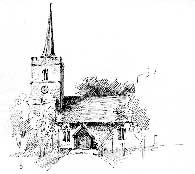
Eliot spent the rest of his days establishing Indian settlements and ministering to the newly arriving slaves. He is THE FIRST MAN KNOWN TO HAVE RAISED HIS VOICE IN PROTEST AGAINST THE SLAVE TRADE.
SIR HENRY BESSEMER (1813–98) inventor of the Bessemer process, which radically lowered the cost of producing steel, was born in CHARLTON, near Hitchin.
Born in Berkhamsted
WILLIAM COWPER (1731–1800), author of The Diverting History of John Gilpin and collaborator with John Newton on the Olney Hymns.
GRAHAM GREENE (1904–91), novelist. Amongst his works are Brighton Rock, The End of the Affair and The Quiet American. He also wrote the screenplay for The Third Man, Carol Reed’s classic film noir.
SIR MICHAEL HORDERN (1911–94), stage and film actor.
ESTHER RANTZEN, TV presenter, born 1940. Best known for BBC consumer programme That’s Life and for setting up Childline.


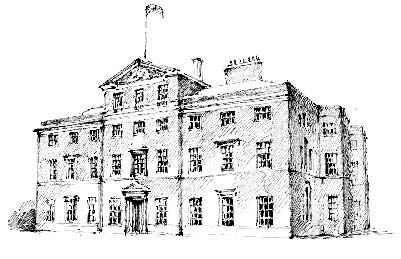



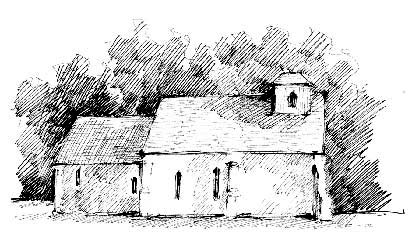


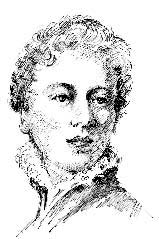

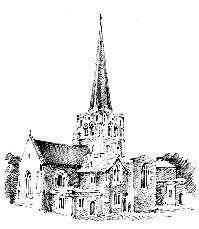


 knew this
knew this 
